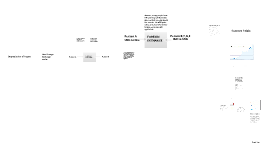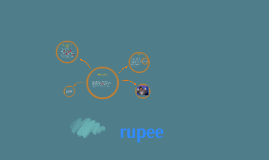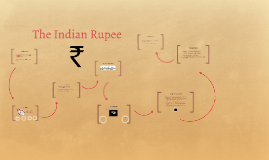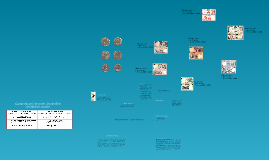Indian Rupee and Paise
Transcript: Indian currency: Indian currency is called the Indian Rupee (INR) and the coins are called paise. One rupee consists of 100 paise. The word Rupee came from the Sanskrit word "raupya" which means silver coin. Reserve Bank of India The reserve bank of India (RBI) is the body that is in charge of India's numismatic and currency production and is India's National Bank. Denominations Paise: Coins in India are available in denominations of 10 paise, 20 paise, 25 paise, 50 paise, Rs. 1, Rs. 2 and Rs. 5. Coins up to 50 paise Rupee: the present denomination of bank notes in India are issued in the denominations of Rs. 10, Rs. 20, Rs. 50, Rs. 100, Rs. 500 and Rs. 1000. These notes are called bank notes as they are issued by the RBI. The printing of the 1,2 and 5 denominations has been discontinued as these denominations have been coinised. However, such noted issued earlier are still in circulation. 5 Rupee note: - 117 * 63 mm _ Issued in 2002 / 2009 10 Rupee note: - 117 * 63 mm _ Issued in 1996 / 2006 20 Rupee note: - 147 * 63 mm - Issued in 2002 / 2006 50 Rupee note: - 147 * 73 - Issued in 1997 / 2005 100 Rupee note: - 157 * 73 mm - Issued in 1996 / 2005 500 Rupee note: - 167 * 73 mm - Issued in 2000 / 2005 1000 Rupee Note: - 177 * 73 mm - Issued in 2000 / 2005 Symbols: 5 Rupee: Tractor - Farming in India is crucial because it is where they get most of their vegetables and fruits from. 10 Rupee: Rhinoceros, elephant, tiger -These are some of the most common animals in India, especially the tiger as it is the nations animal. 20 Rupee: Palm trees, North Bay - 50 Rupee: Parliament of India - IT is the legislative body of the republic of India. 100 Rupee: Himalaya Mountains - The himalayan system is home to the planet's hight peak. 500 Rupee: Dandi March - A march that was conducted by Mahatma Ghandi when the government wanted people to pay tax when buying salt, so they marched to the ocean the ocean to make their own salt. 1000 Rupee: Economy of India - Eleventh largest in the world of nominal GDP. Language Panel: Each of the banknotes have their denomination written in 15 languages. On the other side it is written in English and the main language Hindi. Counterfeit prevention: - Watermark: White side panel of notes has Mahatma Ghandi watermark. -Security thread: All notes have a security band with inscriptions visible when held up to light which reads Bharat (India) in Hindi and RBI in English. _Latent Image: On notes with denominations of Rs. 20 and upwards, a vertical band on the right side of Mahatma Ghandi's portrait contains a latent image showing the respective denominational value in numeral which is visible only when the note is held horizontally at eye level. Mahatma Ghandi Mahatma Ghandi's full name is Monhandas Karamchand Ghandi. He was born on the 2nd of October 1869 in Porbandar. He was married at the age of 13 years old. When he was 19 years old, he went to London to study in the University College to train as a barrister. He helped form the Natal Indian Congress in 1894, through this is moulded and the Indian comunnity in South Africa while he stayed there. In 1944, Britain pledged to grant independence to India once the war was over. Gandhi called for the Congress to reject the proposal once more, since it proposed a division of India among Hindu, Muslim, and Sikh states. The Hindu states would become one nation, while the Muslim and Sikh states would be another. When sectarian violence rocked India's cities in 1946, leaving more than 5,000 dead, Congress members convinced Gandhi that the only options were partition or civil war. He reluctantly agreed, and then went on a hunger strike that single-handedly stopped the violence in Delhi and Calcutta. On August 14, 1947, the Islamic Republic of Pakistan was founded. The Republic of India declared its independence the following day. On January 30, 1948, Mohandas Gandhi was shot dead by a young Hindu radical named Nathuram Godse. The assassin blamed Gandhi for weakening India by insisting on paying reparations to Pakistan. Comparison between Australian and Indian money Indian Currency - Rupee and Paise Mahatma Ghandi

















